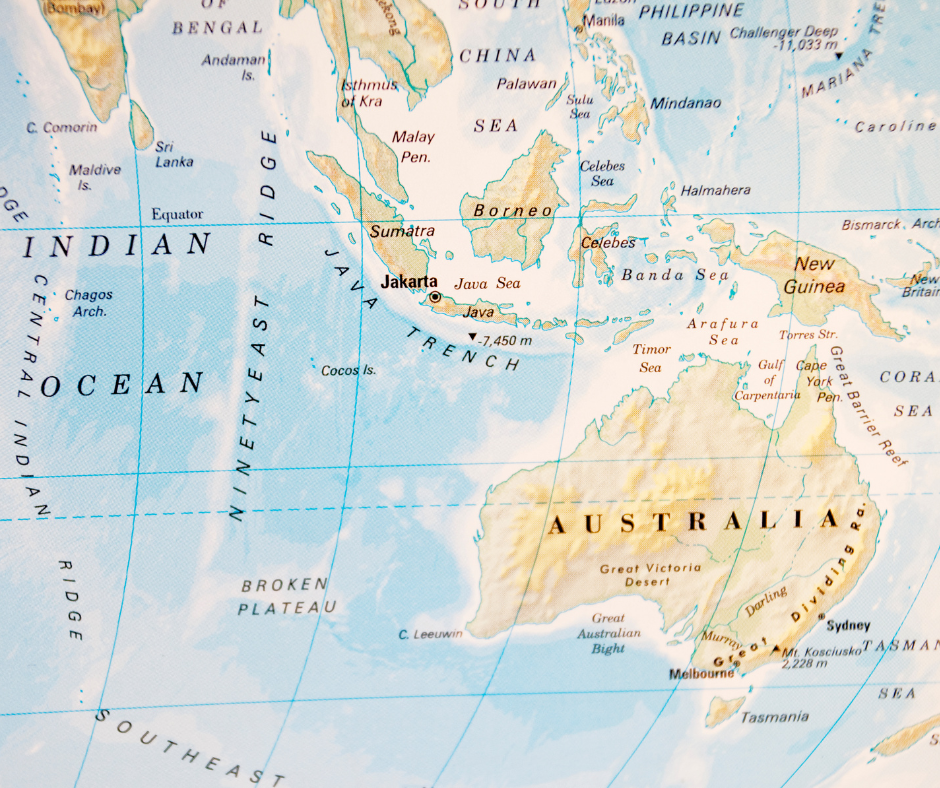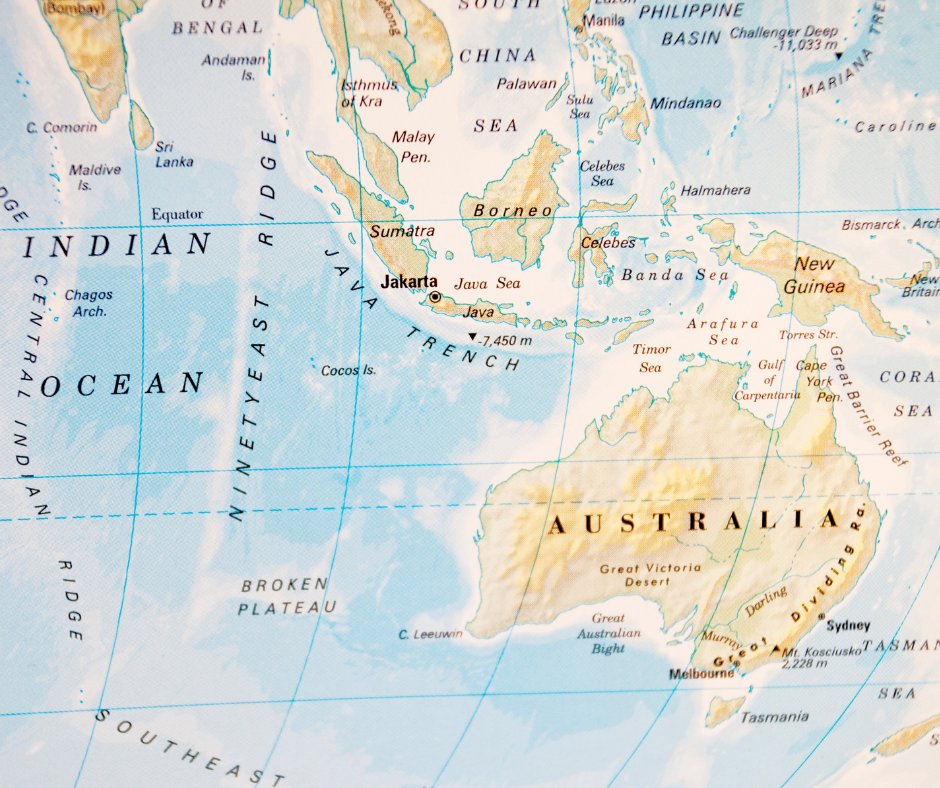7 min read
The EU’s Maritime Ambitions in the Indo-Pacific
By: The Diplomat on March 22, 2023 at 8:00 AM

On March 10, the EU published its new Maritime Security Strategy – an updated and enhanced version of its first maritime strategy from 2014.

The new version is supposed to reflect on and respond to evolving maritime security challenges. Building upon the 2021 Strategy for Cooperation in the Indo-Pacific and its 2022 Strategic Compass for Security and Defense, the document adds to the series of recent political and practical initiatives that mark Europe’s resolve to bolster its contribution in regional security, especially in the maritime domain.
For the global trading power, the need to maintain a free, safe, and stable maritime environment is a matter of strategic interest and the main rationale for EU engagement. Without a standing naval force of its own, the EU relies on the navies of its member states for physical presence, on its technical know-how for the management of functional maritime security issues, and on its regulatory power to uphold the rule of law at sea whenever possible. As little and disconnected as these efforts may sound, when viewed together, they show Europe’s growing maritime footprint, which should be taken into account when addressing Asia’s complex maritime challenges.
An Indo-Pacific Focus Despite (or Because) of Ukraine
Since Russia’s invasion of Ukraine a year ago, many feared Europe’s newfound interest in Asia would wane. Quite the opposite has happened. Beijing’s support of Moscow has managed to plummet China’s image in Europe to a historical low, bringing consensus across the continent and sensitizing European public and policymakers about East Asia’s security concerns. The increasing military alignment between the two authoritarian regimes reinforces the conviction to treat the Asian and the European security theaters in an interconnected manner.
It also boosted the EU’s relationships with partners. Be it in the Indo-Pacific or across the Atlantic, the common sense of threat has led to growing efforts to operationalize political and security cooperation, with maritime security being a prime playground. Since 2021, the EU NAVFOR Atalanta and the Japanese Maritime Self-Defense Force (JMSDF) conducted three joint naval exercises in the Arabian Sea and are about to sign an Administrative Arrangement, designed to seal cooperation and boost interoperability in the long run. In the same timeframe, Atalanta also conducted joint naval exercises with South Korea (October 2021), India (June 2021), and India and Indonesia (August 2022).
Showing the Flag: European Naval Deployments
The increased concentration of European ships in the region since 2021 has not gone unnoticed. Three major European countries that have been instrumental to the formation of the EU’s Indo-Pacific Strategy – France, Germany, and the Netherlands – have deployed their ships to the Indo-Pacific.
France, a resident Indo-Pacific power, has been exercising regularly in the South China Sea, including the Taiwan Strait, from its overseas bases in New Caledonia and Tahiti. Germany sent its frigate Bayern on a historical, and highly symbolic, voyage across the region in 2021. Finally, the Royal Netherlands Navy frigate Evertsen joined the U.K.-led Carrier Strike Group in support of freedom of navigation in 2021.
As quintessential examples of naval diplomacy, the deployments aim to connect, explore reactions, and increase interoperability among partners. All three navies engaged in port calls and joint naval exercises with India, Japan, South Korea, Singapore, as well as the United States and Australia, in various bilateral and multilateral settings at sea and in the air. Even if their effective contribution in strictly operational terms may be limited, they are important demonstrations of willpower, especially given its costs and Europe’s humble naval resources.
The main target audience of such naval signaling has been long-standing “like-minded” partners like Japan and South Korea, which can read it as a reassurance of the EU’s commitment to regional security and determination to walk the talk on its promises. However, the deployments also served to steer domestic interest.
Despite often lively debates at the national level (especially in Germany), we are likely to see more European naval presence in the region in the years to come. The French already announced the intention to deploy its Charles De Gaulle carrier strike group to the region by 2025, and Germany to engage in similar activities on a biannual basis.
One for All, All for One?
The actions of individual European countries often tend to be viewed and treated separately, which fails to see the big picture of the EU’s overall strategic footprint in the region. Yet the connection is inherent. As the initial Maritime Security Strategy from 2014 pointed out, member states’ navies are explicitly encouraged to “play a strategic role in providing global reach, flexibility and access” for the interest of all the European Union. This applies to all operational activities, including the defense of freedom of navigation.
For one, this approach is mutually beneficial. As much as the increasing naval presence of member states adds visibility to EU’s efforts, acting on behalf of a powerful trading bloc also adds legitimacy and serves to further national interests of individual countries. France, as a prime example, has been openly vocal about the European dimension of its engagement in the Indo-Pacific since 2016, hosting European naval officers onboard its ships, pushing for multinational initiatives such as the European Maritime Security Initiative in the Strait of Hormuz, and overall shaping the maritime security agenda in Brussels.
Second, the various modi operandi of European navies allows them to test the ground and reactions by Indo-Pacific parties. Most Southeast Asian countries welcome greater European involvement as a potential stabilizing force in the region, albeit being lucid about its effective value-added in the case of an open conflict. While China keeps opposed to any foreign intervention, its reaction to the European deployments has been more nuanced, and overall less virulent, than its response to the U.S. ones. On the one hand, the British CSG received harsh treatment for being a “toady” of the United States; on the other hand, the transit of the French signal intelligence vessel Dupuy de Lomé in the Strait of Taiwan in October 2021, for instance, was reportedly left without comments.
Finally, member states’ navies are the main actors of the EU’s own maritime security initiatives, such as the Coordinate Maritime Presences (CMP) concept, which aims at providing situational awareness through joint surveillance in the so-called “Maritime Areas of Interest.” So far, the CMP has been successfully tested in the Gulf of Guinea and extended to the northwest Indian Ocean in February 2022. The new maritime strategy foresees the inclusion of new Maritime Areas of Interest, most likely in the Indo-Pacific.
What’s New in the “New” Strategy?
Unpretentiously, the new strategic document is presented as an update – mostly connecting the dots between relevant policy instruments and ongoing initiatives already in place. Among the most noticeable upgrades, it commits to holding an annual EU naval exercise as of 2024, expanding its Maritime Areas of Interest, as well as increasing cooperation with partners, including in regular joint naval exercises and port calls, promoting joint surveillance and information sharing in the protection of critical maritime infrastructure, and deploying liaison officers to regional information fusion centers. To note, the EU already appointed a liaison officer at the Information Fusion Centre in Singapore in August 2022, a double-hatted role assumed by the French naval officer.
Besides bilateral initiatives, it also vows to step up cooperation with regional organizations such as ASEAN and seeks a “Dialogue Partner” status in the Indian Ocean Rim Association (IORA), a position it has been eager to achieve since 2020, when France joined as a full member. An extensive emphasis is put on improving information sharing among maritime information fusion centers and the promotion of Maritime Domain Awareness across the Indian Ocean through its flagship programs MASE and CRIMARIO (Critical Maritime Infrastructure in the Indian Ocean).
Another timely update is the consideration of hybrid and cyberattacks on maritime infrastructure. The strategic importance and sensitivity of critical maritime infrastructure, be it pipelines or submarine cables, has been revealed in the context of Russia’s aggression against Ukraine. In that respect, the Commission proposal to strengthen critical infrastructure resilience provides a comprehensive action plan for enhancing preparedness, response, and international cooperation (including in energy, digital infrastructure, transport, and space), which could be of interest to the Indo-Pacific.
The Indo-Pacific is mentioned on several occasions, as a region of “intense geopolitical competition” that has a “direct impact on European security and prosperity” and where the EU and its members need to expand presence. Against a deteriorating maritime security environment, the Strategy aims to “promote a more coherent engagement in external conflicts and crisis.” However ambitious that may be, Asia may well be the next testing ground. While the bloc’s contribution in case of a major crisis may not be in military terms, there is much it can do in the meantime.
Back to Norms
While warships attract the most attention, a constructive contribution to maritime security and stability does not always have to be with warships. The support of UNCLOS and the promotion of rules-based order at sea remains at the core of the new (and old) Strategy and a non-negligeable asset for the EU’s engagement in the region, where rule of law is challenged on an everyday basis. The principles of cross-sectoral cooperation (between civilian and military, as well as public and private actors) and maritime multilateralism keep guiding the EU’s approach to maritime security, which is particularly needed at times when economic, technological, and strategic interests intertwine.
Often dubbed as the “normative superpower,” the EU remains faithful to its commitment to the protection of marine natural environment and promotion of sustainable solutions to climate change, marine pollution, and resource depletion. As the leader of the United Nations’ framework for the implementation of international ocean governance, the EU also played an instrumental role in successfully concluding the recent U.N. High Seas Treaty, with a major positive impact for the global maritime environment.
The Indo-Pacific is most sensitive to marine environmental degradation, caused by global warming, pollution, and illegal, unreported, and unregulated (IUU) fishing, with severe implications for regional economy and security. The EU’s experience in addressing everyday maritime security concerns such as seaborne crime, migration, and IUU fishing in a multilateral manner can be of utmost value for the region.
Initiatives such as the EU “carding scheme,” a mechanism for tackling IUU fishing in place since 2010, which bans seafood exports to European markets for non-cooperative countries, has led to tangible results, empowering governments to strengthen law enforcement and national regulations. Albeit at the low end of the security spectrum, it is one concrete example of how the trading bloc can leverage its market power to good ends.
To be sure, the EU is not a traditional maritime security actor, as much as it is not a traditional security actor altogether. While the latest maritime strategy could be certainly more ambitious, it reflects an ongoing internal reflection process taking place at the level of 27 sovereign democratic nations, with all the institutional complexities that it entails. If nothing else, it confirms the steady course in Brussels’ strategic thinking, where maritime security and the Indo-Pacific remain among the highest priorities.
Source: The Diplomat
Related Posts
Amid energy crisis, EU plans to help gas-rich..
The European Union is planning a five-fold increase in financial support to an African military..
India, Europe, and the Bay of Bengal: Converging..
Maritime security in the Bay of Bengal can provide ground for convergence among European players..
Is the Israel Iran conflict being played out..
Reports on the morning of 24th April 2021 from the Syrian Arab News Agency (SANA) indicated that an..




